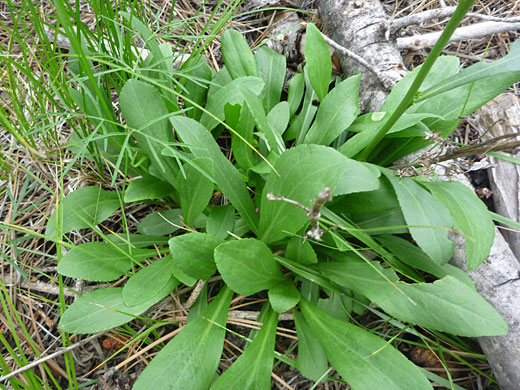Common names:
Sticky goldenrod, spike-like goldenrod
Family:
Scientific name:
Solidago simplex
Main flower color:
Range:
The Four Corners states, the central Rocky Mountains, and small areas of adjacent states
Height:
Up to 31 inches
Habitat:
Varied: rocky slopes, meadows, grasslands, lakeshores
Leaves:
Oblanceolate, up to 4 inches long, hairless, lined by large or small teeth
Season:
July to September
Unlike most goldenrods which have wide, branched flower clusters, the inflorescence of solidago simplex is elongated but narrow, containing as few as 3 heads or as many as 150, in a densely-packed arrangement on all sides of the stem. The number of flowers, and stem height, depends mostly on location; tundra plants are just a couple of inches tall, with very few flowers, while those at lower elevations can be over 2 feet high. Plants can produce just one stem, or up to ten.
Flowers have between 6 and 16 ray florets (usually 8), from 6 to 30 disc florets and 3 to 4 series of short, greenish phyllaries; those at the base are linear to oblong in shape and have rounded tips while those higher up are lanceolate, with pointed tips. The bell-shaped involucres have a few sticky, yellowish glands, a feature not present in some similar species. The large, toothed green leaves grow mostly around the base; stem leaves are smaller and narrower, with edges that are entire or have only small teeth. This is a wide ranging and variable plant, in such aspects as leaf shape, leaf length, phyllary length and stem height.
Flowers have between 6 and 16 ray florets (usually 8), from 6 to 30 disc florets and 3 to 4 series of short, greenish phyllaries; those at the base are linear to oblong in shape and have rounded tips while those higher up are lanceolate, with pointed tips. The bell-shaped involucres have a few sticky, yellowish glands, a feature not present in some similar species. The large, toothed green leaves grow mostly around the base; stem leaves are smaller and narrower, with edges that are entire or have only small teeth. This is a wide ranging and variable plant, in such aspects as leaf shape, leaf length, phyllary length and stem height.
All Contents © Copyright The American Southwest | Comments and Questions | Contribute | Site Map


